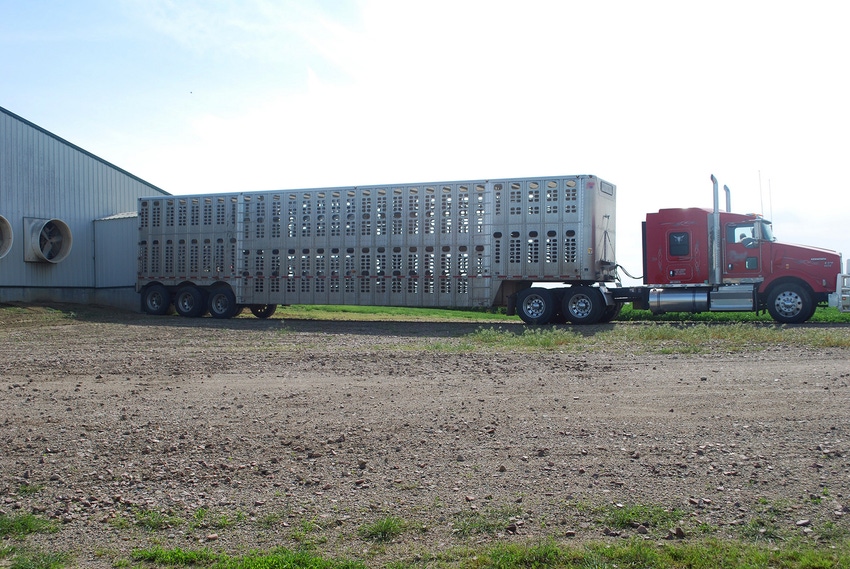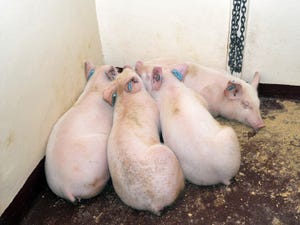What should we expect in the March Hogs and Pigs Report?
An increase in hog inventory is not what the industry needs right now. Hog and pork prices have been dismal in recent months.

USDA's March Hogs and Pigs report will be released Thursday afternoon, March 30. I expect it to say the market hog inventory is slightly larger than a year ago. The December report said the market hog inventory was down 2% for each market weight category. Daily hog slaughter was actually down 4% in December but that was due partially to adverse weather. Since Dec. 1, average daily hog slaughter has been up 0.1% and thus 2% above the level indicated by the December inventory survey.
Since USDA's inventory numbers are not yet available, I will comment (kindly) on my own predictions. My forecast for the hog inventory in Thursday's report is: all hogs and pigs up 1.4%, breeding herd up 0.9% and market hogs up 1.5%, year-over-year.
My forecast of market hog inventories by weight group is: under 50 pounds up 1.0%, 50-119 pounds up 1.5%, 120-179 pounds up 1.8%, and 180 pounds plus up 1.9%.
Both the June and September Hogs and Pigs reports were amazingly accurate. The December inventory survey appears to be a bit low compared to hog slaughter. USDA will likely revise upward their December market hog inventory as well as their summer pig crop to bring it in line with subsequent hog slaughter.
My predictions for quarterly farrowings are: December-February up 0.9%, March-May farrowing intentions up 0.6%, and June-August intentions down 0.3%. I'm predicting pigs per litter were up 0.3% during December-February which leaves the winter pig crop 1.2% larger than last year.
First quarter hog slaughter was up 1.5% compared to the year-ago level. If my predicted inventory numbers are right, the first three quarters of 2023 will see increased slaughter with the fourth quarter close to last year. USDA is forecasting a 1.5% increase in pork production this year.
If slaughter matches my predicted March inventory numbers, hog slaughter will be up 1.7% in April-June and up 1.0% in July-September.
An increase in hog inventory is not what the industry needs right now. Hog and pork prices have been dismal in recent months.
The outlook for hog prices has fallen quickly this year.
Friday's April hog futures was $8.20 lower than the same contract two months ago. Last Friday the April, June, August, October and December lean hog futures contracts averaged $84.53/cwt. That was $7.96 lower (down 8.6%) than 60 days ago.
At the start of 2023, the lean hog futures contract prices indicated 2023 was going to be a profitable year. USDA was forecasting 2023 live hog prices would average $68/cwt. They are now saying $66/cwt.
The national live price for 51-52% lean hogs averaged $54.28/cwt in February, up $0.46 from the month before, but down $12.73 from a year earlier. USDA is predicting second quarter 2023 live hog prices will average $70/cwt with prices $3 higher in the third quarter of 2023. Breakeven is currently in the low $70s. Liveweight prices for 51-52% lean hogs averaged $67.29/cwt in 2021 and $71.21 in 2022. USDA is forecasting 2023 at $66/cwt. Inflation is not being kind to pork. USDA is forecasting 2023 pork production will be 1% lower than in 2021 but prices will be down $1.29/cwt compared to 2021. Normally lower production brings higher prices.
One bit of good news is that May corn futures prices also declined some during the last 60 days (down 32 cents or 4.7%). It is still far above the five-year average.
On Friday March 31 USDA will release their annual Prospective Plantings report. This will give a look at how many acres of what crops farmers are planning to plant this spring. This should help focus the outlook for feed prices.
Lee Schulz at Iowa State University estimated farrow to finish cost of production for February at $98.33/cwt of carcass, down $2.10 from last July’s record high. Hopefully, declining corn prices this fall will pull down cost of hog production. ISU profitability calculations show four consecutive months of losses with peak losses of $36.04 per head in January and $34.39 in February. These were the two worst months since before 2014.
The first quarter of 2023 has been a tough period for the pork industry. Neither hog producers nor packers are making money now. The packer spread (farm to wholesale) during February was the lowest month since April 2020. Hog prices in February were the second lowest month since December 2021. The retailers' spread (wholesale to retail) was the second highest month on record. Inflation has pushed up retail pork prices which have stuck, at least temporary. Retail pork demand has been weak in recent months. Producers and packers desperately need retailers to sacrifice some of their margin to increasing sales volume.
During January U.S. pork exports were up 8.9% with China, Mexico, Canada and Japan accounting for most of the increase. USDA is predicting pork exports will be up 0.2% this year.
During the first month of 2023 U.S. pork imports were down 12.8% with over half of the decrease being less pork from Denmark and Poland. USDA is predicting pork imports will be down 25.2% this year.
Hog imports were up 8.8% in January compared to a year ago.
Hog weights are down from last year. This is likely due to high feed costs and negative feeding margins.
USDA is pegging per capita pork consumption at 51.0 pounds in 2023, down 0.1 pound from the previous two years.
About the Author(s)
You May Also Like





